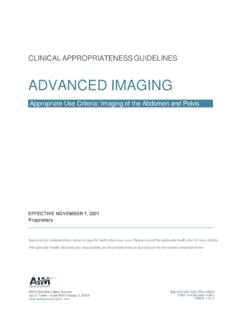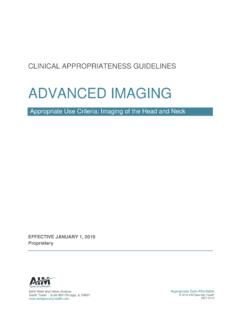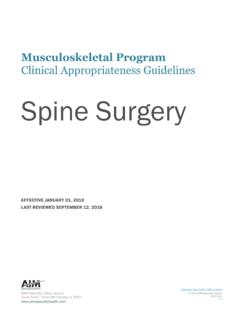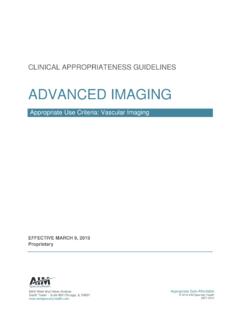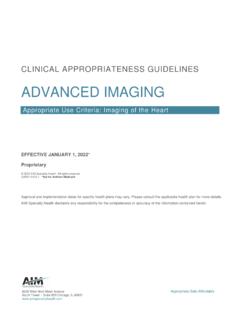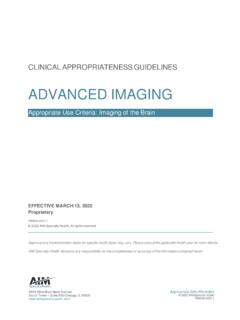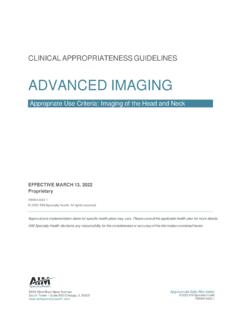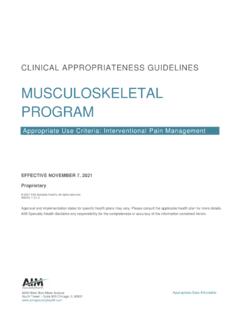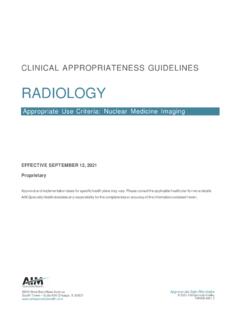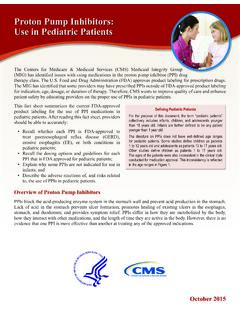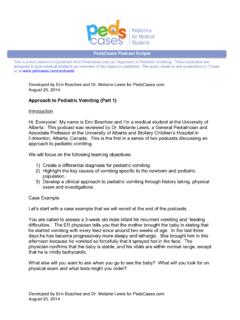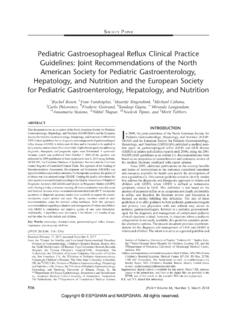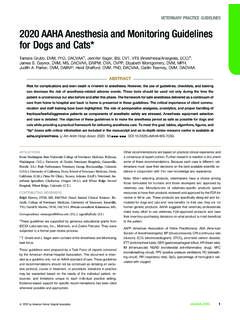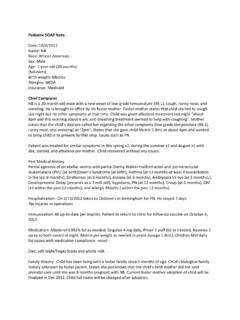Transcription of CLINICAL APPROPRIATENESS GUIDELINES
1 8600 West Bryn Mawr Avenue South Tower Suite 800 Chicago, IL 60631 2017 Effective Date: 09/01/2022 Version Creation Date: 09/01/2022 Approval and implementation dates for specific health plans may vary. Please consult the applicable health plan for more details. AIM Specialty Health disclaims any responsibility for the completeness or accuracy of the information contained herein. CLINICAL APPROPRIATENESS GUIDELINES ADVANCED IMAGING Appropriate Use Criteria: Oncologic Imaging Proprietary 2022 AIM Specialty Health. All rights reserved. Oncologic Imaging 2022 AIM Specialty Health.
2 All rights reserved. 2 Table of Contents Description and Appli cation of the GUIDELINES ..4 General Clini cal Guideline ..5 CLINICAL Approp riateness Simultaneous Ordering of Multiple Diagnostic or Therapeutic Interventions ..5 Repeat Diagnostic Repeat Therapeutic Oncologic Imaging ..7 General Technology Considerations ..7 References ..10 CLINICAL Indications ..12 Cancer Screening ..12 Breast Cancer screening ..12 Colorectal Cancer screening ..13 Lung Cancer Pancreatic Cancer screening .. 14 Hepatocellular Carcinoma screening .. 15 Cancer screening, nototherwise 15 Anal Cancer ..19 Bladder, R enal, Pelvi s, and Ureter C ancers.
3 21 Brain and Spinal Cord C Breast C Cancers of Unknown Primary / C ancers Not Otherwise Cervical Colorectal C ancer ..35 Esophageal and Gastroesophageal Junction Cancers ..39 Gastric Cancer ..41 Head and Neck Cancer ..44 Hepatobiliary Cancers ..47 Histiocytic Neopl asms ..50 Kidney Lung Cancer Non-Sm all Cell ..53 Lung Cancer Small Cell ..56 Lymphoma Lymphoma Non-Hodgkin and Leukemia ..60 Merkel Cell Multiple Oncologic Imaging 2022 AIM Specialty Health. All rights reserved. 3 Neuroendocrine Tumors ..73 Ovarian Can cer ( Epithelial) ..76 Pancreatic Can cer ..79 Paran eoplastic Syndrome.
4 81 Penile, Vaginal , and Vul var C ancers ..83 Prostate C ancer ..86 Sarcom a of Bone and Soft Tissue ..89 Testicular C Thoracic Can cers Pleura, Thymus, Heart and Mediastinum ..96 Thyroid Cancer ..98 Uterine Cancer ..101 Suspected Metastases, not otherwise sp ecified ..104 Codes ..107 Oncologic Imaging 2022 AIM Specialty Health. All rights reserved. 4 Description and Application of the GUIDELINES The AIM CLINICAL APPROPRIATENESS GUIDELINES (hereinafter the AIM CLINICAL APPROPRIATENESS GUIDELINES or the GUIDELINES ) are designed to assist providers in making the most appropriate treatment decision for a specific CLINICAL condition for an individual.
5 As used by AIM, the GUIDELINES establish objective and evidence-based criteria for medical necessity determinations where possible. In the process, multiple f unctions are accomplished: To establish criteria for when services are medically necessary To assist the practitioner as an educational tool To encourage standardization of medical practice patterns To curtail the perf ormance of inappropriate and/or duplicate services To advocate for patient safety concerns To enhance the quality of health care To promote the most efficient and cost-effective use of services The AIM guideline development process complies with applicable accreditation standards.
6 Including the requirement that the GUIDELINES be developed with involvement from appropriate providers with current CLINICAL expertise relevant to the GUIDELINES under review and be based on the most up-to-date CLINICAL principles and best practices. Relevant citations are included in the References section attached to each Guideline. AIM reviews all of its GUIDELINES at least annually. AIM makes its GUIDELINES publicly available on its website twenty-four hours a day, seven days a week. Copies of the AIM CLINICAL APPROPRIATENESS GUIDELINES are also available upon oral or written request. Although the GUIDELINES are publicly-available, AIM considers the GUIDELINES to be important, proprietary inf ormation of AIM, which cannot be sold, assigned, leased, licensed, reproduced or distributed without the written consent of AIM.
7 AIM applies objective and evidence-based criteria, and takes individual circumstances and the local delivery system into account when determining the medical APPROPRIATENESS of health care services. The AIM GUIDELINES are just GUIDELINES for the provision of specialty health services. These criteria are designed to guide both providers and reviewers to the most appropriate services based on a patient s unique circumstances. In all cases, CLINICAL judgment consistent with the standards of good medical practice should be used when applying the GUIDELINES . Guideline determinations are made based on the inf ormation provided at the time of the request.
8 It is expected that medical necessity decisions may change as new information is provided or based on unique aspects of the patient s condition. The treating clinician has final authority and responsibility for treatment decisions regarding the care of the patient and f or justifying and demonstrating the existence of medical necessity for the requested service. The GUIDELINES are not a substitute for the experience and judgment of a physician or other health care prof essionals. Any clinician seeking to apply or consult the GUIDELINES is expected to use independent medical judgment in the context of individual CLINICAL circumstances to determine any patient s care or treatment.
9 The GUIDELINES do not address coverage, benefit or other plan specific issues. Applicable federal and state coverage mandates take precedence over these CLINICAL GUIDELINES . If requested by a health plan, AIM will review requests based on health plan medical policy/ GUIDELINES in lieu of the AIM GUIDELINES . The GUIDELINES may also be used by the health plan or by AIM for purposes of provider education, or to review the medical necessity of services by any provider who has been notified of the need for medical necessity review, due to billing practices or claims that are not consistent with other providers in terms of f requency or some other manner.
10 Oncologic Imaging 2022 AIM Specialty Health. All rights reserved. 5 General CLINICAL Guideline CLINICAL APPROPRIATENESS Framework Critical to any finding of CLINICAL APPROPRIATENESS under the GUIDELINES for a specific diagnostic or therapeutic intervention are the following elements: Prior to any intervention, it is essential that the clinician confirm the diagnosis or establish its pretest likelihood based on a complete evaluation of the patient. This includes a history and physical examination and, where applicable, a review of relevant laboratory studies, diagnostic testing, and response to prior therapeutic intervention.
